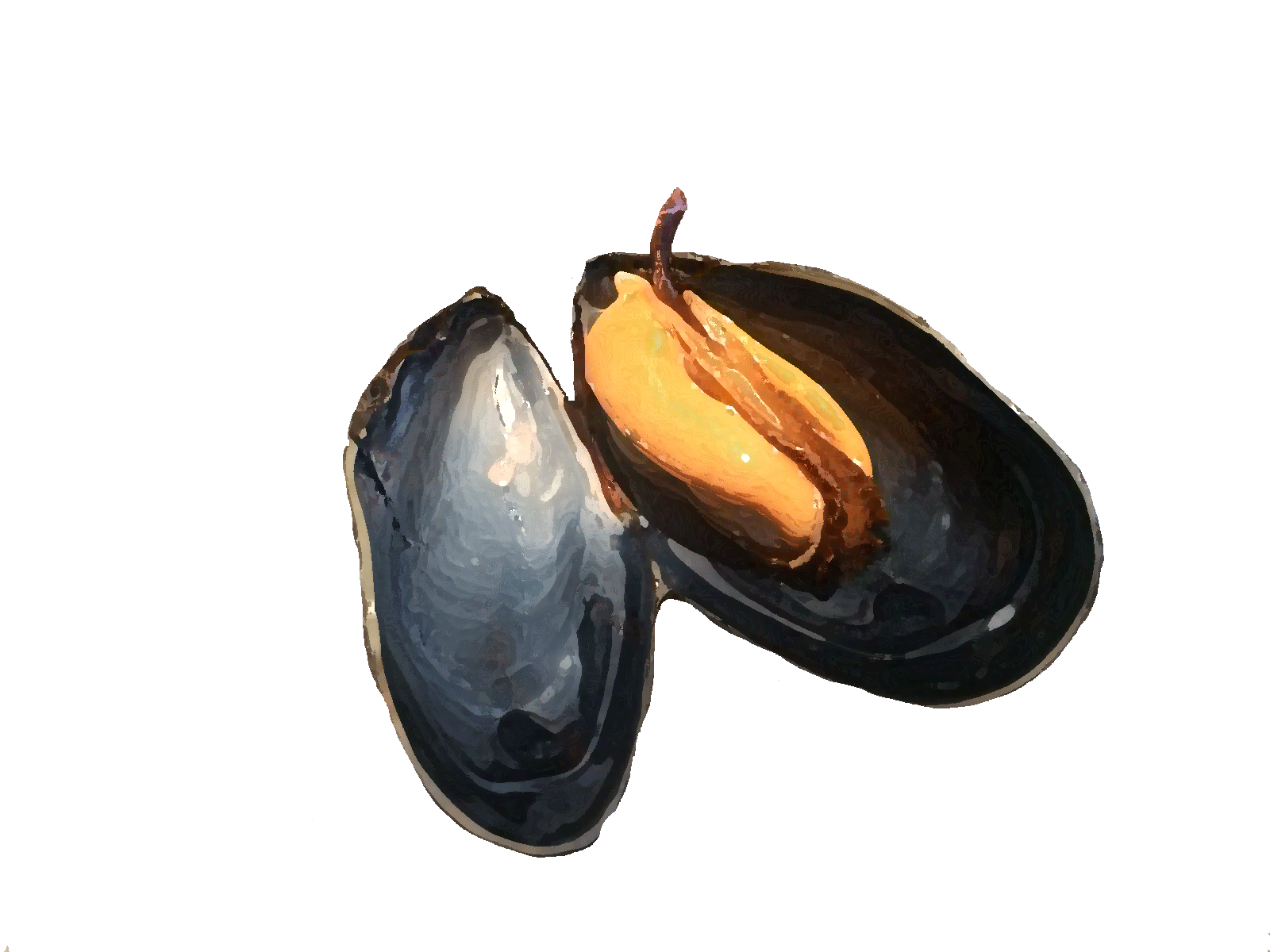Definitions
Autotrophic organisms are plants, algae and some bacteria that can make their own food. They do this by using sunlight or chemicals to convert simple substances (such as water andCO2) into nutritious food. They do not need other organisms to survive. This ability to make their own food makes them very important in ecosystems, as they provide the foundation on which other animals can live.
Soil shear stress, also known as soil frictional stress, is a physical concept that refers to the force exerted at the boundary between a solid soil and the water flowing along it. It occurs when the flow of water moves across the bottom surface, exerting friction on bottom particles. This frictional force causes soil particles to shift and move.
In the context of the described research related to mussel beds and runoff, bottom shear stress is used as a measurement to quantify the force of water flow exerted on the mussels lying on the bottom. It can give an indication of the intensity of the current and the potentially abrasive force exerted on the mussels. When the soil shear stress exceeds a certain threshold, it can result in mussels becoming detached from the soil, which can lead to runoff.
In this study, bottom shear stress measurements were used to observe and analyze when washout of mussels occurred and how these events were related to various factors, such as wave exposure and duration of stormy conditions.
A Critical Dislodgement Threshold (CDT) refers to a specific value of an external force, such as currents or waves, required to dislodge or tear an object or organism from its original position. In various contexts, this term is used to indicate the level of force or load required to remove something from its substrate.
In the context of the previously discussed research on mussels and runoff, the CDT refers to the critical threshold soil shear stress (u) required to tear mussels loose from the soil to which they are attached. When the bottom shear stress reaches or exceeds a certain value, the force exerted on the mussels becomes so great that they loosen and begin to move due to the water current or waves.
This concept of a CDT is important for understanding the behavior of organisms and objects in response to external forces, such as the effect of waves on mussels in marine ecosystems. Establishing a CDT is useful for understanding when and under what conditions detachment may occur, which in turn can help manage and predict ecological processes.
Detritus refers to organic material derived from dead plants, animals and other organic remains in aquatic ecosystems. It can also consist of excrement and other decomposing organic matter. Shellfish, such as mussels, oysters and barnacles, play an important role in cleaning up detritus in marine and freshwater environments.
Isotopes are different forms of an element with the same number of protons but a different number of neutrons in their atomic nucleus. Stable isotopes are isotopes that do not decay or are radioactive. They remain stable over time and do not change into other elements. In the case of carbon, the element we are talking about here, there are two stable isotopes: carbon-12 (12C) and carbon-13 (13C). These isotopes behave the same way chemically, but they have a slightly different weight because of the difference in the number of neutrons in their atomic nucleus. Scientists can use these stable isotopes to trace different sources of elements in nature. For example, in the case of carbon (C), they can measure the ratio of carbon-12 to carbon-13 (referred to as δ13C) to find out where the carbon comes from, whether from marine sources, land plants or other sources. So, stable isotopes are different forms of an element that help scientists understand where certain substances come from in nature.
Machine learning is a technology by which computer systems learn to recognize patterns in data and make predictions without being explicitly programmed.
Mussel seed collection facility (MZI) is a specific type of construction used in aquaculture to collect and grow mussel seed. The main purpose of an MZI is to capture and grow mussel seed into young mussels that can later be harvested for consumption. Mussel seed are the young, small mussels that arise from the reproductive processes of adult mussels. An MZI usually consists of floating structures such as buoys, nets and ropes placed in the water. This structure is designed to optimize the natural process of mussel seed collection by providing a suitable environment for mussel seed to adhere to surfaces and grow. The seed adheres to the nets, ropes or other substrates attached to the structure.
Retention efficiency is the ability of shellfish to filter food particles from water and retain these particles for nutrition. Shellfish such as mussels, oysters and barnacles use their gills or other filter structures to filter out small particles such as plankton and organic matter from the water. High retention efficiency means that the shellfish is able to filter a large proportion of available food particles from the water and retain them for food. This is important for shellfish growth and survival because it affects their ability to extract and utilize nutrients from their environment.

